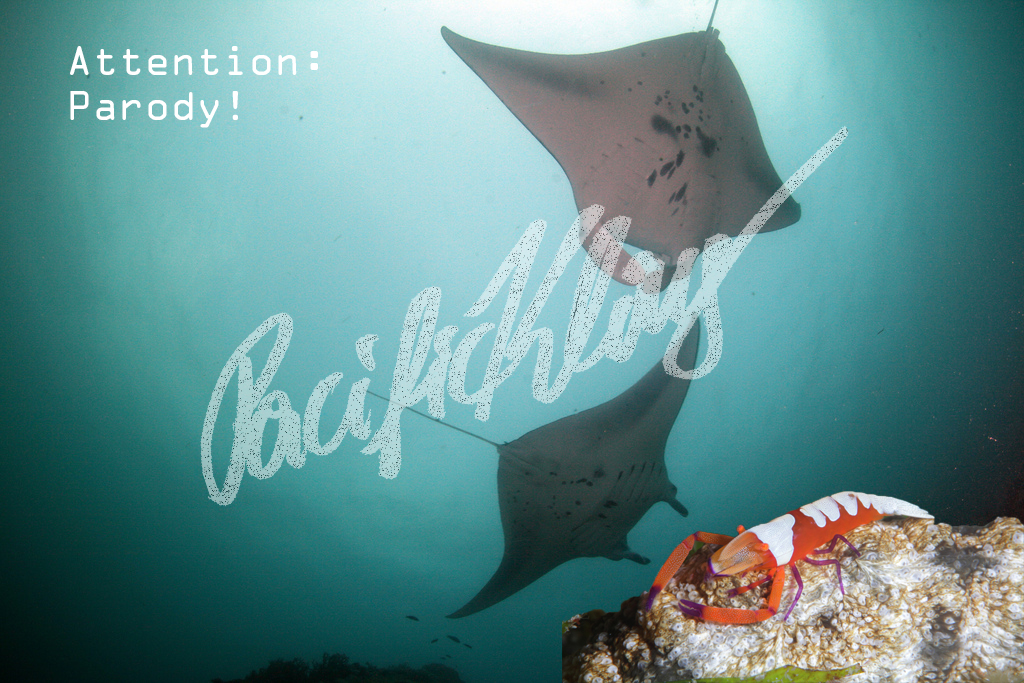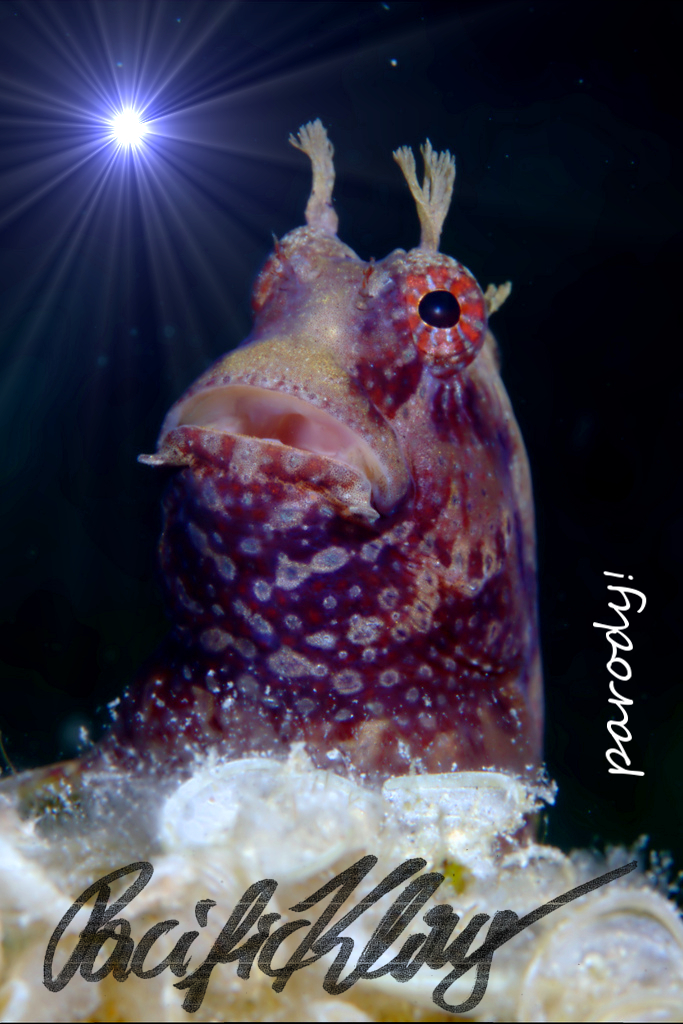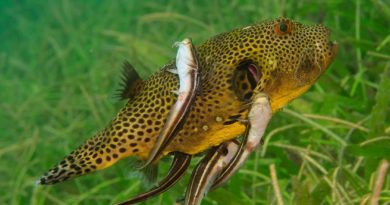Is underwater photography becoming a joke?
I think underwater photography is a great art form – it is the art form I like best & enjoy most and into which I invest most time and energy. At its best, underwater photography produces images at the intersection of science and art; Beautiful photographs to look at, teaching us about the fascinating underwater world.
But recently, the art form has suffered from the acts of shameless seekers of cheap visual attention; these “photographers” populate Facebook photo groups and online photo contests. What are they doing so counter the spirit of good underwater photography?
Essentially, they are completely shameless in digitally altering their photographs. A staple are composites of several exposures: a crab in the foreground plus a large shark or a boat from below in the background: finished is the image (not photograph!) with a guaranteed the “wow!” effect. Sunbursts are also very popular amongst the image alternators: nothing like a few sun rays coming from the top corner of an image to warm the heart. It does not matter that this is not a photograph anymore – it looks good! What more can you want? Honesty? Screw that. Another thing seen quite often are sea slugs, seahorses or other small, normally bottom-dwelling animals in mid-water, surrounded by totally black background. I know, some flatworms swim, and seahorses sometimes do, but most nudibranchs don’t. Hence: these animals were either abused by throwing them into the water column for the purpose of getting a ‘great’ shot with no background, or the images were completely altered in post-production, by cropping the animal out of its surroundings. Either way, not a good thing!

What, we should ask, is a photograph? It’s a recording of light falling through your camera’s lens in one instant – one exposure – which can be anywhere from 1/2000 second to many seconds. Anything else, with things removed, added, added and removed, extensively blurred out or partially darkened: it might look nice, but it’s not a photograph anymore. Such alterations are easy to spot for the photographically educated: if the subject in the foreground is in focus, the region right behind the foreground out of focus, but the shark/boat/ray in the background is in focus again, then that’s a photoshop-job! Such an arrangement is simply made impossible by the laws of optics. Also, often something looking too good is an indication that it is faked.

Look at the blenny above. I recently had a discussion with a “photographer” who submitted a similar, essentially faked photograph to a photo contest, and he had the nerve to call his manipulation “photographic skill”. It matters little that he copy-pasted a real sun and not a digital effect. If it’s not one exposure, it’s not a photograph.
And, oh, yes, the watermarks. I can understand that someone would want to protect his photograph from unauthorized uses, especially if the photograph is very good or he is making a living with his photography. But in most cases, neither is the case, and the watermarks (yes, plural: multiple on one image) have nevertheless grown to enormous proportions. To the point where they completely spoil any visual enjoyment of the photograph. It’s almost as to say: “See, how big the watermark is! My picture must be sooo valuable, because it needs such a big watermark to protect it.” But the photograph behind the large Joeshmoe-Photo.com icon is often less than mediocre. Did Van Gough sign his paintings in a giant font all across the canvas? No, of course not. I suggest to follow his example: Put your (smallish) watermark in some corner!
These trends are happening in a lot of photography, and a few years ago, even National Geographic had to disqualify a cheating contest winner. But I think these trends are extra bad in underwater photography. Why? Because (real) underwater photography is hard. It’s difficult to keep your buoyancy stable enough to shoot the small things in the ocean; and the light is poor; and there might be a current or surge, and your camera is in a clumsy housing. All of that makes photographing underwater so much more difficult than on land, which then makes many people cheat.
This is Jason Edwards, the Nat Geo photographer in charge of the 2013 Nomads Travel scholarship competition which I have entered. He sums it up quite well what proper digital manipulation for photographs (especially the ones entered into contests) should be, and what not:
I am not against new techniques, of course. Look at this image of downtown Melbourne. I made it with the high-dynamic range technique, where three or more photographs of the same scene, taken in rapid succession, are fused in software. The result looks more like a drawing, since HDR eliminates most under- and overexposed parts of the image. Am I really a hypocrite and no better than the cheater-boys? I think not, for two reasons:

First of all, I am honest about what I am doing. I will clearly state what modifications I used, with which parameters. I am not pretending that my modified images are something they are not. And, I am using these new techniques in a sensible way – to achieve effects not possible with regular photography. I am not using them to get effects which fake what could be done with photography.
In conclusion, my suggestion is: focus more on learning photo skills, diving skills, and marine biology. Focus less on plastering faked images with large watermarks on Facebook to impress the easily impressed.
And, one more thing: Yes, of course, there are lots of excellent underwater photographers who don’t at all act the way I was just ranting about.

